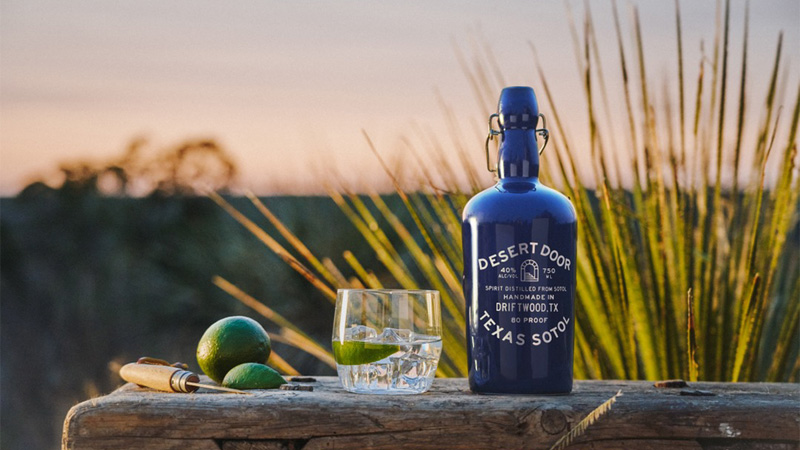Sotol isn’t the easiest spirit to define. A distilled spirit native to Mexico, sotol’s history, designation, and flavor can vary wildly. Although long tied to Mexico’s Chihuahua region, where growers and distillers have produced some form of the spirit for centuries, it is notably difficult to pin down exactly how long sotol has been produced here (most sources say at least 800 years, but estimates vary from 300 to nearly 9,000 years). The spirit’s geographical origins have led many to compare sotol with other Mexican spirits, such as tequila and mezcal; but sotol is not as closely related to agave as some might think. It’s also definitively Texan.
So, what is sotol?
Sotol is the distillate made from the fermentation of the desert shrub Dasylirion, a plant that is also referred to as “sotol” in Spanish, and “desert spoon” in English. Although grouped in with agave spirits, Brent Looby, partner of Texas-based sotol brand Desert Door, says that comparing agave and sotol is like relating two very distant cousins. In fact, he says, there are about 22 varieties of sotol, each with its own flavor profile. Most Mexican sotol is made from Dasylirion wheeleri; while Texan sotol is made from Dasylirion texanum, a slightly thinner plant.
“Sotol is also wild-harvested, so its flavor is heavily influenced by the land,” Looby says. “This means each batch can have its own unique flavor pending on where it was found.”
Moreover, despite existing for several centuries, the spirit’s production in Mexico wasn’t legalized until 1994. In 2004, the Mexican government established a designation of origin (DO) for sotol, indicating that the native spirit — or what can be labeled and marketed as sotol — can only be produced in the three Mexican states of Chihuahua, Coahuila, and Durango. Despite that designation, sotol is made throughout Mexico as well as the southwestern United States, most notably in West Texas.
But sotol is mainly distinguishable by its flavor profile, which results from its terroir, much like wine, Looby says. Depending on where it is grown, flavors range from grassy to pine-y to warm cinnamon.
“Sotol is truly unique in that it tends to harness flavors from the environment in which it grows,” Looby says. “Its flavor is one of the things that drew us to create the spirit in the first place.”
Desert Door was founded in 2017, and its offerings currently include its original sotol — “bright, herbaceous, and floral with a slightly creamy, sweet, and earthy finish,” Looby says — and Desert Door Oak Aged, which “adds layers of coffee, caramel, vanilla, and a little bit spice on the finish.” (Further confounding consumers is sotol’s tendency to borrow techniques and nomenclature from tequila, such as “joven,” “reposado,” and “añejo” expressions.)
To get acquainted with the category, Looby recommends sipping sotol neat. “That’s the best way to get the full, unique flavor,” he says. However, he adds, “It also mixes really well in cocktails — you can substitute it for gin, vodka, or tequila. I have yet to find a traditional cocktail that it doesn’t elevate.”
No matter the preference, Looby encourages giving sotol a chance. “If you’re looking for something different that tastes unique, you owe it to yourself to try it,” he says.

